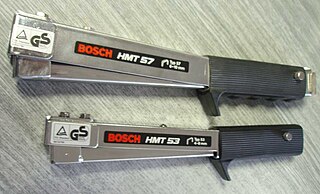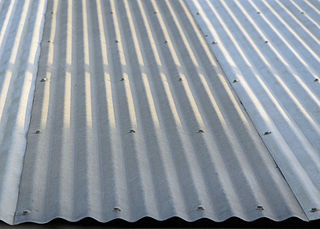

Rosin paper (red building paper, red rosin paper, brown rosin paper, slip sheet paper, rosin-sized sheathing paper, and building paper) is a heavy duty felt paper used in construction such as underlayment under flooring and siding.


Rosin paper (red building paper, red rosin paper, brown rosin paper, slip sheet paper, rosin-sized sheathing paper, and building paper) is a heavy duty felt paper used in construction such as underlayment under flooring and siding.
Rosin paper is a heavy duty felt paper. It is used in construction such as underlayment under flooring and siding. In building construction, rosin paper is used to reduce air and moisture flow through a wall or floor, create a "friction barrier" so different materials can slip by each other as they expand and contract, keep dust from working down through a floor, and minimize squeaking. Rosin paper is also sometimes used to temporarily protect a work site during construction.
Papers from the Middle Ages were sized with gelatine, but the invention of the paper-making machine in the late 18th century demanded a better size [1] resulting in utilization of rosin. Rosin paper may have a polyurethane coating to improve moisture resistance and tearing. It contains abietic acid, and comes in many size rolls up to 96 inches (2.4 m) wide.
Alum-rosin size was invented by Moritz Friedrich Illig in Germany in 1807 [2] and is known to have been used as a building paper by 1850.
Rosin paper is known by a number of different names, including red building paper, red rosin paper, brown rosin paper, slip sheet paper, rosin-sized sheathing paper, and building paper. The name rosin-sized sheathing paper (commonly used to describe the material), comes from the rosin used in the paper, the process of sizing it to add the rosin, and its use by builders.

Plywood is a composite material manufactured from thin layers, or "plies", of wood veneer that are glued together with adjacent layers, having both glued with each other at right angle or at 90 degrees angle. It is an engineered wood from the family of manufactured boards, which include medium-density fibreboard (MDF), oriented strand board (OSB), and particle board.

A floor is the bottom surface of a room or vehicle. Floors vary from simple dirt in a cave to many layered surfaces made with modern technology. Floors may be stone, wood, bamboo, metal or any other material that can support the expected load.
Flooring is the general term for a permanent covering of a floor, or for the work of installing such a floor covering. Floor covering is a term to generically describe any finish material applied over a floor structure to provide a walking surface. Both terms are used interchangeably but floor covering refers more to loose-laid materials.

Building material is material used for construction. Many naturally occurring substances, such as clay, rocks, sand, wood, and even twigs and leaves, have been used to construct buildings. Apart from naturally occurring materials, many man-made products are in use, some more and some less synthetic. The manufacturing of building materials is an established industry in many countries and the use of these materials is typically segmented into specific specialty trades, such as carpentry, insulation, plumbing, and roofing work. They provide the make-up of habitats and structures including homes.
Sizing or size is a substance that is applied to, or incorporated into, other materials—especially papers and textiles—to act as a protective filler or glaze. Sizing is used in papermaking and textile manufacturing to change the absorption and wear characteristics of those materials.

A mat is a hard floor covering that generally is placed on a floor or other flat surface. Mats serve a range of purposes including:

A radiant barrier is a type of building material that reflects thermal radiation and reduces heat transfer. Because thermal energy is also transferred by conduction and convection, in addition to radiation, radiant barriers are often supplemented with thermal insulation that slows down heat transfer by conduction or convection.

Tar paper is a heavy-duty paper used in construction. Tar paper is made by impregnating paper with tar, producing a waterproof material useful for roof construction. Tar paper is similar to roofing felt, historically a felt-like fabric made from recycled rags impregnated with melted asphalt, and today evolving into a more complex underlayment of synthetic mesh or fiberglass strands waterproofed by synthetically enhanced asphalt.

Masonite is a type of hardboard made of steam-cooked and pressure-molded wood fibers in a process patented by William H. Mason.
Underlay may refer to flooring or roofing materials, bed padding, or a musical notation.

Fiber cement siding is a building material used to cover the exterior of a building in both commercial and domestic applications. Fiber cement is a composite material made of cement reinforced with cellulose fibers. Originally, asbestos was used as the reinforcing material but, due to safety concerns, that was replaced by cellulose in the 1980s. Fiber cement board may come pre-painted or pre-stained or can be done so after its installation.

Exterior insulation and finish system (EIFS) is a general class of non-load bearing building cladding systems that provides exterior walls with an insulated, water-resistant, finished surface in an integrated composite material system.

A vapor barrier is any material used for damp proofing, typically a plastic or foil sheet, that resists diffusion of moisture through the wall, floor, ceiling, or roof assemblies of buildings and of packaging to prevent interstitial condensation. Technically, many of these materials are only vapor retarders as they have varying degrees of permeability.
A building envelope or building enclosure is the physical separator between the conditioned and unconditioned environment of a building, including the resistance to air, water, heat, light, and noise transfer.

Fiberboard or fibreboard is a type of engineered wood product that is made out of wood fibers. Types of fiberboard include particle board or low-density fiberboard (LDF), medium-density fiberboard (MDF), and hardboard or high-density fiberboard (HDF).

A Hammer stapler is a tool used for securing a variety of thin plastic and paper sheet building materials against flat surfaces by tacking a staple using a high velocity slapping motion similar to that of swinging a hammer. Typically the shallower the staple, the better hold its grip on the surface is.
Underlayment may refer to:

Bituminous waterproofing systems are designed to protect residential and commercial buildings. Bitumen is a material made up of organic liquids that are highly sticky, viscous, and waterproof. Systems incorporating bituminous-based substrates are sometimes used to construct roofs, in the form of "roofing felt" or "roll roofing" products.

Fibre cement is a composite building and construction material, used mainly in roofing and facade products because of its strength and durability. One common use is in fiber cement siding on buildings.

Sustainable Slip Resistance is a particular floor friction testing method and selection criteria for use in choosing and sourcing slip-resistant flooring that maintains good tribological characteristics over its life cycle to minimize slip and fall accidents. Testing floors before and after they are in place on a property can assure a building owner that safe flooring has been chosen and installed for its intended use. This floor slip resistance testing method, developed by the McDonald's Restaurant chain and now specified by many other property owners assesses the effects of mild abrasion on wet slip resistance. This test identifies flooring that has a high propensity to lose its wet slip resistance.